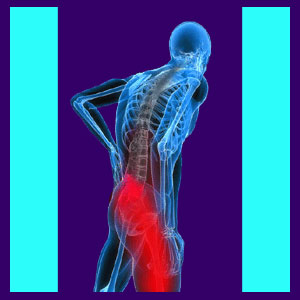
Functional short leg conditions describe nonstructural reasons why one leg is a different length than the other. Functional leg length discrepancies are some of the main reasons cited for chiropractic adjustments and are also treated using a variety of other hands-on therapy methods, such as massage and physical therapy.
Functional leg length issues differ from structurally-motivated leg length differences in that there is no variation in bone length in functional examples, while in skeletal discrepancies, there is actually one or more leg bones longer on one side than on the other. Functional discrepancies are considered highly subjective diagnostic pronouncements and this is where the controversy of their treatment begins.
This dialog examines the hotly debated topic of functional leg length problems. We will examine how they are diagnosed and treated, as well as detail the often illogical assumptions used to justify therapy for what often seems scientifically to be complete nonissues.
Functional Short Leg Diagnosis
Functional differences in leg length are almost exclusively diagnosed by chiropractors, who cite a difference in leg length as being indicative of spinal misalignment. This diagnosis is used to justify and guide spinal adjustment in order to rebalance the anatomy and optimize neurological signaling capability in the vertebral column. Occasionally, functional versions of short leg are diagnosed by massage therapists or physical therapists, especially when doing intensive body work on the affected area due to a pain complaint or for post-injury rehabilitation.
The reason for legs to be different legs can be easily ascertained between functional and skeletal causations, using x-ray technology. The leg bones and joints are imaged and compared in to determine is either bone is longer or any of the joints are involved in changing the position of the bones. If no discrepancies are found skeletally side-to-side, functional short leg can be accurately diagnosed.
Most chiropractors will assume that a functional leg length is related to one or more spinal subluxations and will seek to correct the problem using manual vertebral adjustments. Meanwhile, physical therapists and massage practitioners will almost always seek out a soft tissue-related causation of functional versions of short leg, including the possibility of muscular, tendon or ligamentous injury, tightness or imbalance.
Functional Versions of Short Leg Syndrome
Treatment for functional leg length concerns depends greatly on the suspected source of length differential, as well as the type of care offered by the diagnostician:
For chiropractic patients, the explanation for a leg length problem is virtually always cited to be spinally-enacted. Chiropractors will therefore seek to realign the vertebral column using an assortment of manipulations including hip, sacral, lumbar, thoracic and cervical adjustments. Some chiropractors might utilize complementary modalities of care to improve treatment results, such as heat or ice, hydrotherapy, massage or trigger point work. Rarely, a chiropractor might diagnose a purely soft-tissue reason for functional short leg. In these instances, the chiropractor might treat the condition using nonspinal techniques or may refer the client to seek care from a soft-tissue specialist, such as a massage therapist or physical therapist.
Massage therapists will always utilize soft tissue work to treat cases of diagnosed functionally shortened leg syndrome. They will usually seek out sections of tight or tender tissue, or areas that seem to be preventing full range of motion, and concentrate therapy into these tissues. Specialists generally use deep tissue work to treat these cases, since the skeletal muscles usually can not be adequately treated with superficial massage work.
Physical therapists will generally diagnose functional short leg due to muscular injury or imbalance and will virtually always go about treating the condition using a variety of conservative care practices including stretches, exercise and hands-on body work. Physical therapy will usually work the area regionally, in order to strengthen and heal tissues in the entire affected leg.
Functional Short Leg Criticism
Any and all of these care routines can be ideal when used for truly problematic and indicated conditions, but that is where the problem resides. The vast majority of functional leg length issues are not painful and if pain is indeed present, are misdiagnosed as the causation, rather than an incidental and often transient factor. Transient functional short leg is found almost universally in the general population and has never been definitively linked to back pain or sciatica in any of the countless credible studies performed.
The anatomy is constantly in flux and the length of each leg is completely dependent on the overall balance of the body at any given moment or position. These factors are always changing and adjusting for an infinite number of reasons. Therefore, most objective scientific minds view the majority of functional leg length “problems” as much ado about nothing at all. They are simply nonissues.
Of course, there are exceptions to the rule, when a patient has an obvious and functionally affective anatomical problem usually involving a muscular, ligamentous or tendon-related injury or abnormality. In some cases, treatment is surely indicated and even surgical intervention may not be out of the question to resolve serious symptomatic conditions. However, these circumstances are the gross exceptions to the rule of coincidental functional short leg diagnosis.
I have become famous for writing about my personal experiences involving chiropractic shenanigans. I have shared many experiences where I was adjusted by one chiropractor after being diagnosed with functional short leg and was then subsequently diagnosed and treated by another chiropractor in multi-doctor clinics, without ever moving or leaving the table after the first set of corrective adjustments were deemed to be successful. This is very telling as to the nature of many chiropractic-diagnosed functional leg length concerns and this experiment has been subsequently repeated by many of my readers with identical results over the past 10 years time.
I have also sought massage treatment in the past and have been told I have limb length differentials by a few therapists who seemed thrilled to be able to use specialized care techniques that were meant to resolve these problems. I sometimes would go from one therapist who still reported a significant differential to another who reported finding nothing of note within literal minutes of one another.
All this first-hand experience, combined with similar stories sent in by readers and the considerable proof offered by objective scientific research, tells me that most functional leg length issues are not concerns and might not exist at all in many diagnosed patients. Therefore, treatment for such conditions is not needed, not generally effective (save by placebo) and accomplishes nothing except to generate income for a caregiver while providing no tangible benefit whatsoever. This is not an absolute rule, but does hold true for the majority of diagnoses I see on a daily basis.





